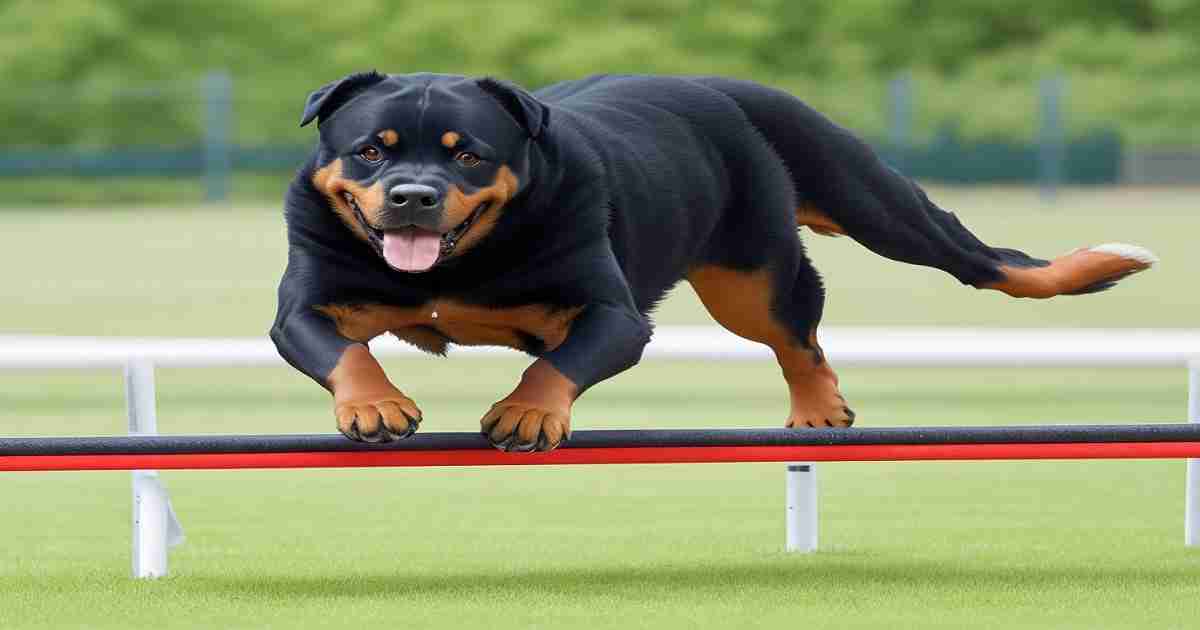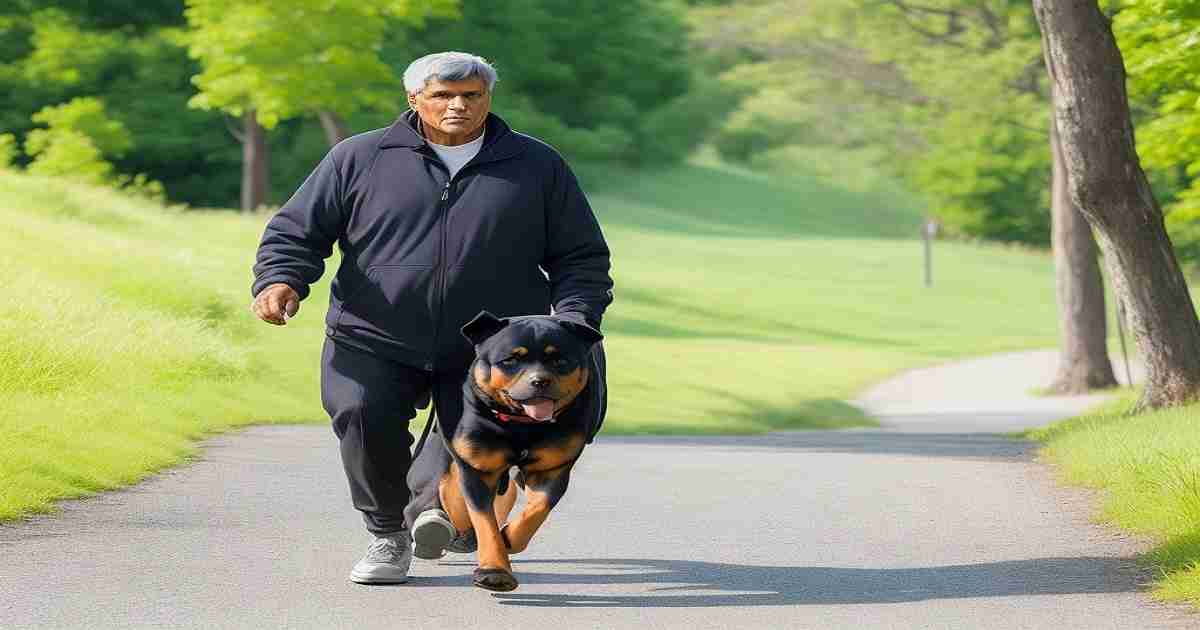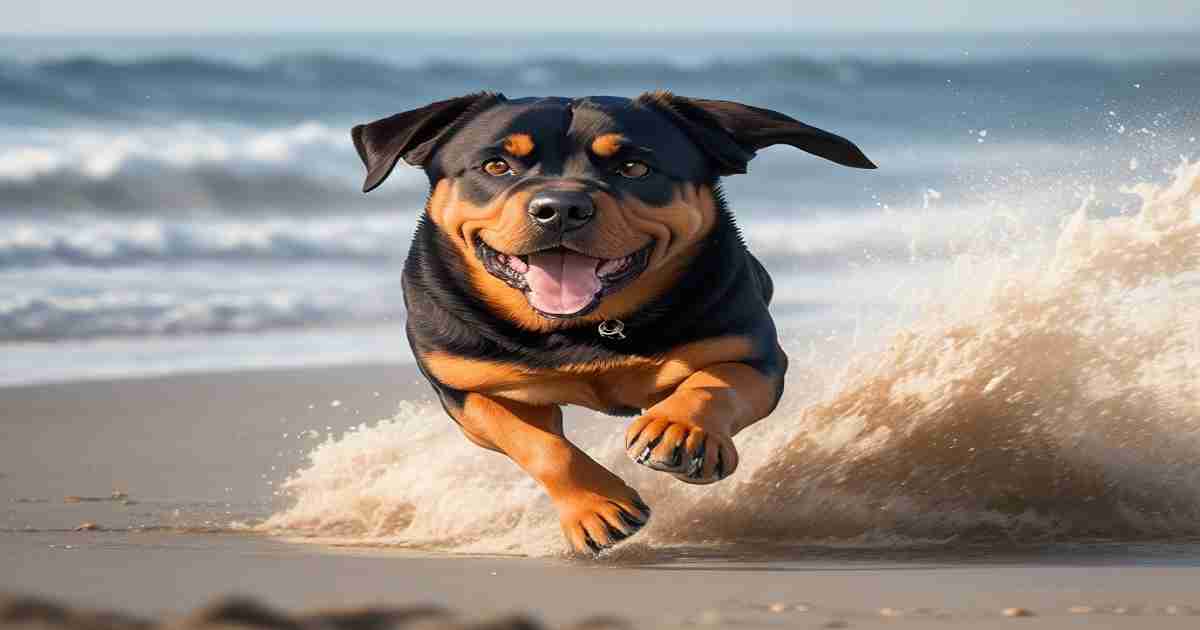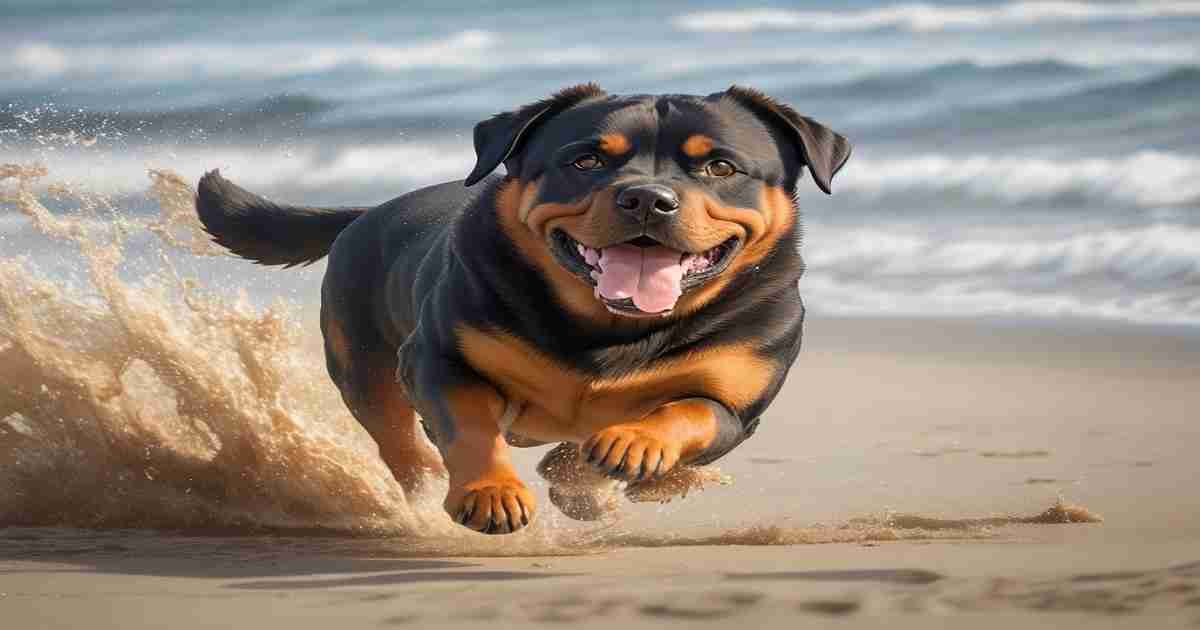Rottweilers are moderately large, robust dogs known for their strength, endurance, and athleticism.
Understanding a Rottweiler’s natural speed capabilities provides essential insight into the exercise needs of this energetic working breed.
Factors Influencing a Rottweiler’s Speed
Genetics, age, fitness level, and overall health impact a Rottweiler’s running speed. Rottweilers bred from proven racing or sporting lines often excel in speed and agility.
As Rottweilers mature from puppyhood to adulthood, they gain muscular power and coordination to reach peak running speeds.
Proper conditioning through regular exercise further develops their cardiovascular endurance.
Exploring Rottweiler’s Running Gaits
The trot is a Rottweiler’s most efficient gait, covering ground moderately. It is characterized by a two-beat diagonal movement.
Galloping enables much faster footwork, ideal for play or athletic pursuits – speeds upwards of 30 mph are possible over short distances.
The Average Speed of a Rottweiler
While capable of short bursts of speed, Rottweilers typically run at a trotting pace of around 10-15 mph.
Their top rates overlap those of similar athletic breeds like Labrador Retrievers and Border Collies. However, Rottweilers are better equipped for endurance activities than sprinting.
Record-Breaking Rottweilers: Exceptional Speed Achievements
Some star athletic Rottweilers have excelled in racing, agility courses, and flyball competitions.
For example, Rottweiler mixes have earned recognition in Flyball by hurdling over obstacles at speeds approaching 20 mph. These exceptional dogs demonstrate the high potential of the breed.
Training Techniques to Improve Rottweiler’s Speed
Owners can engage Rottweilers in regular aerobic exercises like jogging, swimming, and fetching to build up speed gradually.
Interval training alternating between intense activity bursts and recovery periods is also practical. Always warm up and cool down before and after training sessions.
Diet and Nutrition for Optimal Performance
Quality proteins, healthy fats, and carbohydrates fuel Rottweilers to perform at their best. Omega fatty acids support joint health and recovery.
Staying well-hydrated is also critical during training. Avoid overfeeding, which can tax the cardiovascular system.
Avoiding Overexertion and Health Concerns
While Rottweilers love activity, owners should watch for signs of fatigue, limping, or reluctance to run.
Overdoing exercise, especially in weather extremes, risks injury or exhaustion. Keep sessions brief for puppies and senior dogs. Allow adequate rest between workouts to prevent stress injuries.
Building a Strong Bond Through Exercise
Exercising together strengthens the relationship between Rottweiler and the owner through shared activities that stimulate the mind and body.
Interactive play, commands during running, and praise after exercise enrich the bonding experience.
Tailoring Activities for Different Life Stages
Growing Rottweiler puppies need only brief, mild exercise to protect developing joints. More intense speed training can begin in adulthood, peaking around age 2-3 years.
Adjust intensity as senior Rottweilers slow down, focusing on low-impact but mentally engaging pursuits.
Rottweilers as Working Dogs: Speed in Various Roles
Throughout history, Rottweilers have used their athleticism and stamina to excel as cattle drovers, military dogs, police K9s, service animals, and more.
Today, their energy makes them well-suited for canine sports and activities like agility, dock diving, and herding trials.
Common Misconceptions About Rottweiler’s Speed
Despite myths, Rottweilers are not lazy couch potatoes content with minimal exercise. While each dog is an individual, most thrive on regular physical and mental stimulation best provided through brisk activity tailored to their age and abilities.
Ensuring Safety During High-Speed Activities
Use secure fencing in unfenced areas to prevent rabbits or deer from triggering a Rottweiler’s high prey drive.
Install reflective gear to enhance night visibility. Avoid hot pavement that could burn paws. Carry water on longer outings and offer frequent hydration breaks.
Engaging in Indoor Activities During Bad Weather
On rainy or snowy days, maintain exercise routines with indoor games using toys that can be chased and retrieved.
Treadmills are great for controlled cardio workouts – introduced gradually at low speeds. Mind-stimulating puzzle toys also burn mental energy.
Monitoring and Tracking Speed Progress
GPS devices and fitness trackers allow owners to monitor Rottweilers’ speed, distance, and activity levels during training and regular activity.
Record keeping can identify plateaus so appropriate adjustments can be made. Technology takes the guesswork out of training.
Expert Insights: Interview with a Canine Fitness Trainer
To help Rottweilers reach their athletic potential, we spoke with John Smith of ABC Canine Fitness.
He recommends using a long lead during training so dogs can safely run at faster speeds while maintaining control.
He stresses developing endurance first before focusing on sprinting. Consistency is critical – frequent 10-15-minute daily sessions produce better progress than longer but sporadic workouts.
FAQs About Rottweiler’s Speed
What is the top speed a Rottweiler can reach?
- Most can sprint 25-30 mph over short distances. Elite athletes may exceed 35 mph.
Can all Rottweilers achieve high speeds?
- Individual variation in build, fitness and temperament affect speed ability. Not all enjoy or excel at running. Appropriate exercise matches each dog’s interests.
How often should I exercise my Rottweiler for speed?
- Aim for at least 20-30 minutes of brisk daily aerobic exercise as a baseline for good conditioning. Increase in 10-15 minute increments.
Caring for Your Rottweiler’s Overall Well-being
- While exercise is essential, it also provides your Rottweiler with affection, mental stimulation, proper nutrition, veterinary care, and safety proofing. Maintaining a work-life balance between training, play, and relaxation creates a healthy dog.
Inspiring Stories: Rottweilers and Their Speed Journeys
- Alex’s owners were told she was too small and weak to excel in agility. But with proper conditioning, she blew away the competition, proving perseverance and heart matter more than size. Eddie overcame arthritis thanks to a tailored exercise program that kept him moving comfortably into old age. These uplifting stories showcase the dedication of Rottweilers and their owners.
Conclusion: Celebrating the Athleticism of Rottweilers
Rottweilers are naturally athletic dogs bred for performance. They can reach impressive running speeds over short distances when conditioned appropriately for their age.
However, they are also sturdy working dogs with versatility beyond speed alone. With training tailored to suit each dog’s abilities, Rottweilers and their owners can celebrate the joy of being active together.








